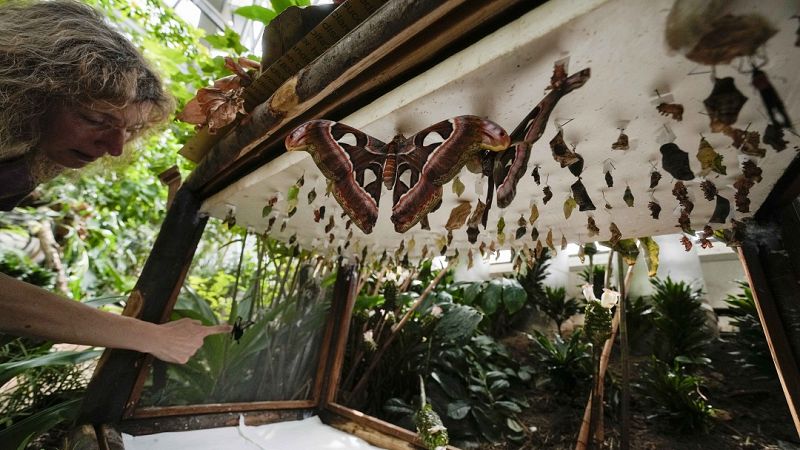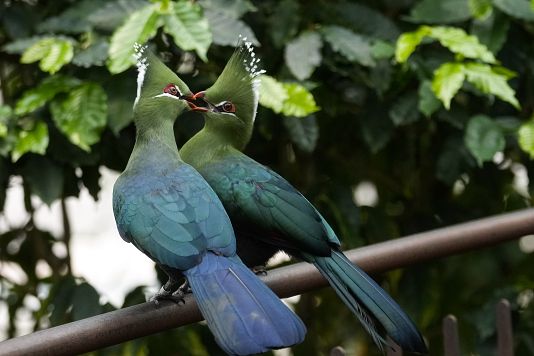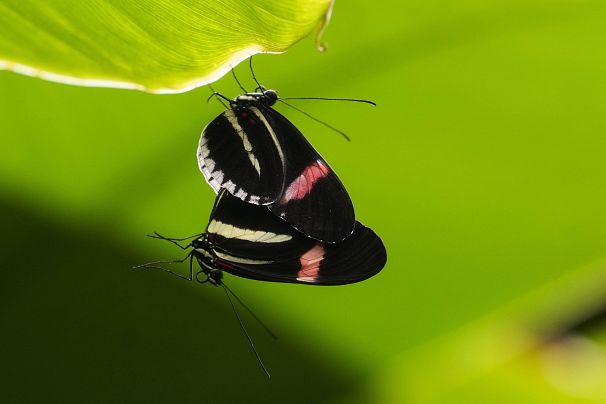Tanzanian forest recreated in Italy to raise awareness on biodiversity research

Inside 600 square metres of forest in Italy, a critical pollinator is in the spotlight: butterflies.
Various species and colours flutter freely and butterfly pupae are suspended in a structure as they grow into adult insects inside a greenhouse of the Museo delle Scienze (MUSE), a science museum in Trento, Italy.
The ecosystem created in this greenhouse is modelled on part of a mountain range and rainforest area in south-central Tanzania.
“The butterfly forest project is contextualized in the MUZE tropical greenhouse, which is strongly focused on the Tanzanian environment of the Udzungwa Mountains, and this is because the museum has an ecology monitoring centre in Tanzania, in that national park," Lisa Angelini, MUSE greenhouse director says.
Through a partnership with Tanzania National Parks, MUSE in 2006 established the Udzungwa Ecological Monitoring Centre to support the park in ecological monitoring and biodiversity research, as well as to support development of environmental education programs for schools.
The forest in Trento is designed to create public awareness on some of the research that MUSE is doing in Udzungwa Mountains to study and protect the world’s biodiversity against threats such as deforestation and climate change.
Deforestation leads to habitat loss, which causes declines in nectar sources for butterflies, changing the functioning of the ecosystem.
By fragmenting forests, deforestation limits the movements of the insects and reducing their genetic diversity.
These impacts cause declines in biodiversity and potential extinction of vulnerable butterfly species.
The body temperatures and metabolic rates of butterflies are influenced by air and soil temperatures.
Climate change is altering the life cycles of the insects, impacting their development rates, mating behaviours, and migration patterns.
Butterfly populations are declining in many areas, especially in places under intensive land use.
Conservations strategies
The scientists behind the Butterfly Forest hope that their research will spur the development of conservation strategies aimed at increasing knowledge of butterfly communities in specific habitats and monitoring their distribution over space and time.
“Our aim is that of being able to study better, to understand better what is happening,” says Lisa Angelini, a botanist and director of the MUSE greenhouse. “Our work consists of monitoring and trying to give, to develop projects in order to bring attention to biodiversity-related issues, so that we can always do better.”
The butterflies fluttering around the facility are currently mainly sourced from butterfly farming projects in Costa Rica and feature insects native to South America and Asia, for reasons of transport and availability.
Butterflies are key pollinators that enable plants to reproduce and therefore facilitating food production and supply.
They are also food for birds and other animals. The insects are indicators of biodiversity and scientists use them as models to study the impacts of habitat loss and other threats.
“Insects in general play a fundamental role in the proper functioning of ecosystems,” says Mauro Gobbi, an entomologist and a researcher at MUSE.
With at least 2,500 plant species, more than 120 mammals, and thousands of invertebrate species, Udzungwa Mountains is rich in biological diversity and has more than 40 endemic species of butterflies.
It’s part of the Eastern Arc Mountains of Kenya and Tanzania that are a proposed UNESCO Heritage site.
High-altitude environments like Udzungwa Mountains National Park are highly suitable for studying the effects of climate change because they usually have no direct human impact, says Gobbi.
“Generally high altitude environments are the most suitable for studying climate change’s effects because usually there’s no direct anthropogenic (human) impact. The work we are carrying out as MUSE, but also in collaboration with colleagues around the world, demonstrates that we are facing an important biodiversity crisis."
The tropical greenhouse in Trento has more than 200 plant species and 13 animal species.
It features plant species endemic to the Eastern Arc mountains, as well as birds, reptiles, amphibians, fish and invertebrates such as butterflies, all inside 600 square metres of forest that has a waterfall, cliffs and inclinations.
The key challenge for butterfly conservation is to change the current farming policies to increase the amount of low-intensity farmland, and promote heterogeneous landscapes preserving the remaining patches of natural habitats, increasing the extent of semi-natural habitats and limiting the distribution of monocultures.
Gobbi and other scientists have warned that failure to protect insects from impacts of climate change will drastically reduce the planet’s ability to build a sustainable future.
Gobbi says the MUSE's work can help shed light on the biodiversity crisis.
"Scientific research confirms that butterflies, like other insects, are in crisis. We are losing species, we’re losing them forever, and this is going to break the balance of ecosystems.”



